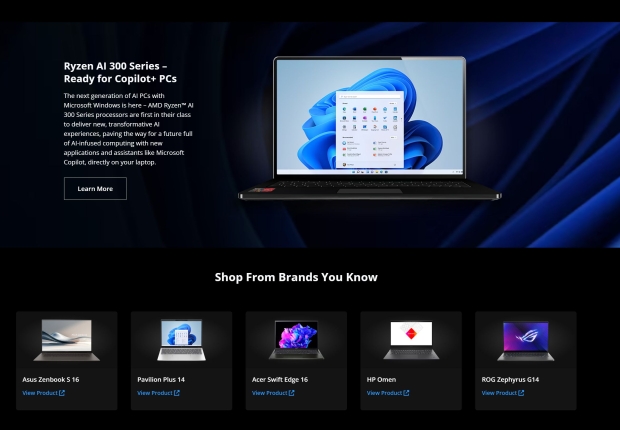Hawk Point was AMD’s first AI processor for the notebook market. In December 2023, in reactionary to the Core Ultra Meteor Lake launch, It launched Hawk Point led by Ryzen 8040 and launched quite a healthy quantity of new systems. Behind the scenes, some of our friends in the OEM environment quoted shortages in getting the notebook chips in Q4 last year and the following quarter. Partners were quoting miscommunication, false promises, and generally bad treatment, as bad as from Intel in its dominant years.
This decision and market excitement about Qualcomm’s Snapdragon X Elite resulted in a dramatic reduction of Ryzen AI 300 systems at launch.
In the meantime, the new player Qualcomm, managed to get the press all excited about its Snapdragon X Elite generation. Qualcomm was in a pickle as it had to wait for Microsoft to release the operating system and Copilot +, but still scored an incredible street cred as the performance and power that the company showed were very good. With the first-generation product, it managed to get into the corporate presentations of both Intel and AMD.
Computex 2024
At Computex, AMD announced Strix Point and branded it as Ryzen AI 300. It was a last-minute decision to rename AI 200 with AI 300 but it was notable that only Asus committed with multiple SKUs and announce availability shorty after. Being a 28W part it didn’t really manage to compete well with Meteor Lake, Intel Core Ultra, or especially Snapdragon X Elite. That’s what Ryzen 8040 is for and its Kraken point replacement at some future date.
AMD Ryzen Processors for Premium Laptops
AMD's official website calls Strix point AMD Ryzen™ Processors for Premium Laptops. Currently, there are five SKUs listed, two from Asus, two HP, and one Acer in 14- and 16-inch size.
Bestbuy.com has multiple SKUs from Asus including Asus ProArt P16, Asus ProArt PX13, ASUS Vivobook S 14, Zenbook S 16, and ASUS - ROG Zephyrus G16, available.
The prices are ranging from $1199,99 for ASUS - Vivobook S 14 and go all the way up to $2699,99 for ASUS - ProArt P16 16" top SKU.
We could not find HP and Acer Ryzen AI 300-based notebooks available on the market on their website. HP OmniBook Ultra 14-inch was supposed to be available in August, but so far in mid-September, it still isn’t.
Leading US and German e-tailers including Best Buy, Amazon, and notebooksbilliger.de didn’t have them either. Lenovo's website claims to have Yoga Pro 7 Gen 9 available in the DACH (Germany, Austria, Switzerland) region in the next two weeks. There is no sign of the Ryzen AI 300 at the US Lenovo store.
Qualcomm scored more OEMs than established AMD
Snapdragon X Elite launched with seven OEMs, and AMD only managed to impress three at launch. This is a worrying trend as traditionally newcomer takes the market share from the runner-up not necessarily the leader.
The worst part for the Ryzen AI 300 is that Intel has a very promising Lunar Lake Core Ultra 200 series available in the market in less than two weeks and the Arrow Lake notebook chip won’t be far behind.
According to rumors, AMD will have Stix Helo (bigger GPU) and Kraken Point, a replacement of the Ryzen 8040 Hawk Point generation potentially launching at CES 2025. There is a possibility of a 10.10 event launch for one of them but AMD and its investors focus on AI and data centers, so they won't pollute this launch with too much consumer stuff. Kraken Point has Zen 5 cores (Hopefully a mix of Zen 5 and Zen 5c) and RDNA 3.5 GPU and let’s hope they will result in more designs.
Following Nvidia's footsteps, as usual, led AMD to choose Data Center over consumers and things are not looking up for the following year either. The startup culture of AMD is simply preventing AMD from exploring its position. Contrary to Nvidia who still maintained leadership in consumers, AMD's decision simply led to a cold war ice age in relationships with the OEMs, right at the time when Qualcomm started getting partners excited and when Intel came back with the strongest notebook CPU probably in the last decade.




